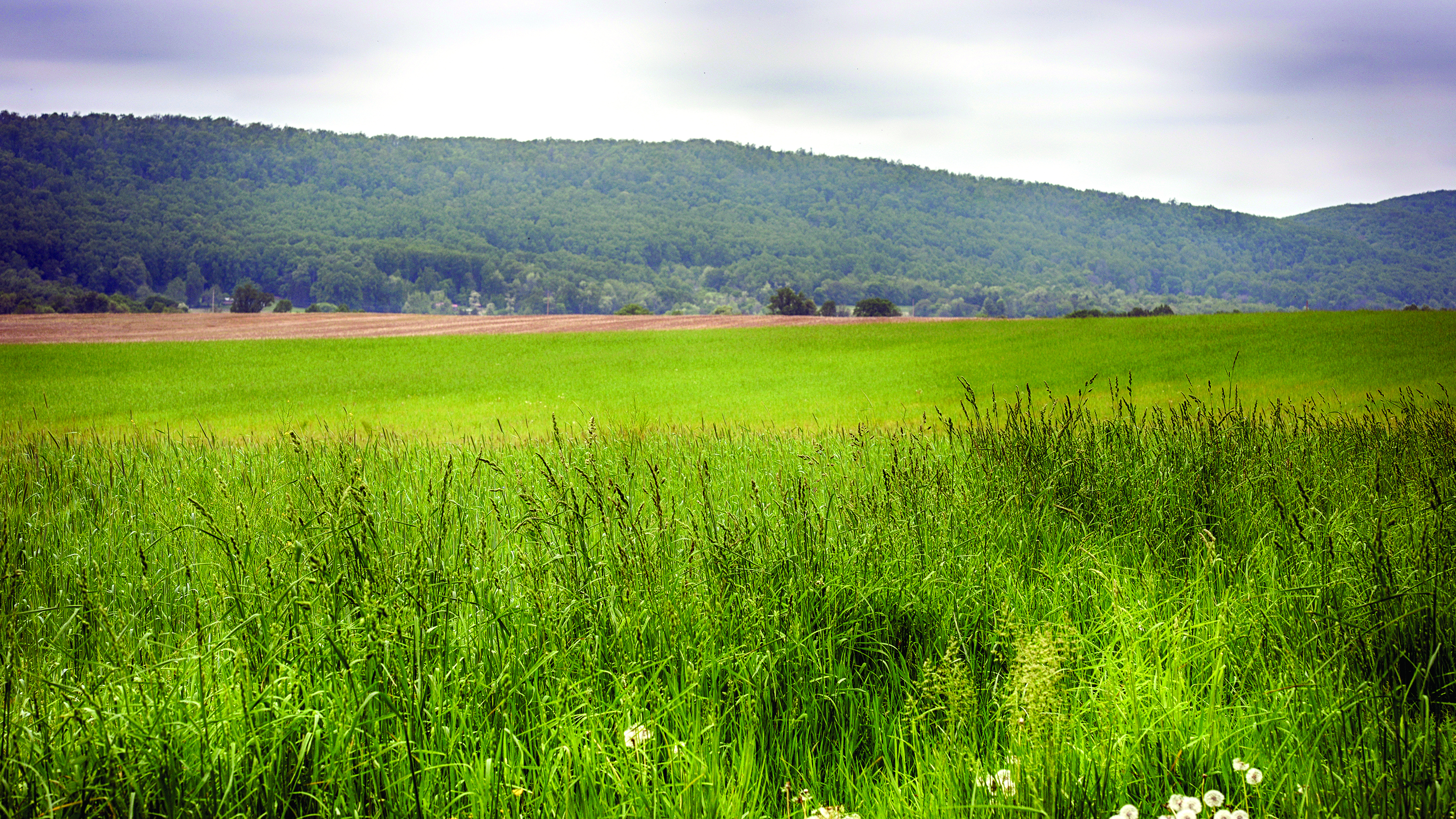McClellan’s and Lee’s armies fought three battles in one day to gain control of passes east of Sharpsburg
While tens of thousands of people visit Antietam National Battlefield every year, a relatively small number explore nearby South Mountain, where fighting occurred on September 14, 1862, as a precursor to that bloodiest day of the Civil War.
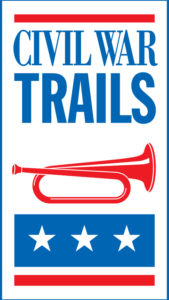
Riding the tide of Confederate victories, Robert E. Lee decided to take his Army of Northern Virginia north of the Potomac River following the Second Battle of Manassas on August 28-30, 1862. He could not have predicted the desperate showdown his men would fight on the steep, boulder-strewn terrain of South Mountain.
His bold plan to divide his army into five parts and establish supply lines for an advance into central Maryland was laid out in Special Orders No. 191, dated September 9. The secret dispatch was discovered by Union troops near Frederick, Md., and delivered to Maj. Gen. George B. McClellan, commander of the Army of the Potomac. McClellan turned his men to the west to force a contest with the divided segments of Lee’s force and on September 14 fought three battles with Lee’s rear guard in the three South Mountain gaps—from north to south, Turner’s, Fox’s, and Crampton’s.
Rising to a height of nearly 1,000 feet above the surrounding valley, the craggy and wooded slopes of South Mountain would prove to be some of the most rugged ground encountered by both armies in the Eastern Theater. The Federals ultimately gained control of all three passes, but the one-day Battle of South Mountain bought Lee enough time to reunite his army, setting the stage for the clash three days later at Sharpsburg, about 10 miles away.
Nearly 650 acres of the South Mountain Battlefield have been preserved, and visitors to the area can view interpretive signs and monuments at all three gaps. The Appalachian Trail cuts through the mountain passes; those inclined to hike through history can walk along the trace of the old Wood Road the Confederates used to rush reinforcements to Fox’s Gap. The surrounding towns of Middletown and Burkittsville sit at the eastern base of the mountain and have maintained their 19th-century charm. Tourists can easily follow Civil War Trails signs by foot to read more about how the neighboring battles disrupted these pleasant hamlets.
[hr]
The National War Correspondents Memorial, 1005 Arnoldstown Rd., Jefferson, Md.
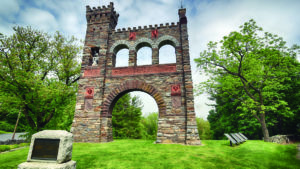 George Townsend was just 20 years old when the Civil War broke out in 1861, and he began covering it as a reporter for several New York newspapers, often under the pen name Gath. In 1884, Townsend purchased a tract of land in Crampton’s Gap on which he built a large estate, including a memorial to his fellow war correspondents. Erected in 1896, the monument features tablets inscribed with the names of 157 correspondents and war artists. In 1904, the monument was turned over to the U.S. War Department and later transferred to the National Park Service.
George Townsend was just 20 years old when the Civil War broke out in 1861, and he began covering it as a reporter for several New York newspapers, often under the pen name Gath. In 1884, Townsend purchased a tract of land in Crampton’s Gap on which he built a large estate, including a memorial to his fellow war correspondents. Erected in 1896, the monument features tablets inscribed with the names of 157 correspondents and war artists. In 1904, the monument was turned over to the U.S. War Department and later transferred to the National Park Service.
[hr]
Fox’s Gap, 8629 Reno Monument Rd., Middletown
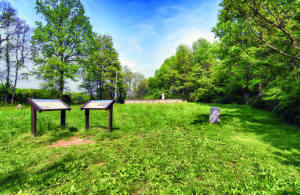 Elements of Confederate Maj. General D.H. Hill’s Division defended Fox’s Gap against Union Maj. Gen. Jesse Reno’s 9th Corps throughout much of the day. The bloody fighting here included one of the few instances of actual hand-to-hand combat of the war when the 13th North Carolina was surrounded by Ohio regiments near a stone wall at midday. The late afternoon arrival of reinforcements helped unify the Federals and Confederate Brig. Gen. Thomas Drayton’s Brigade fled down the mountain, leaving Fox’s Gap under Union control by 5:30 p.m. The fighting at Fox’s Gap claimed the lives of two generals, one from each side: Reno and Confederate Brig. Gen. Samuel Garland Jr. Monuments to both men are located on the gap grounds today.
Elements of Confederate Maj. General D.H. Hill’s Division defended Fox’s Gap against Union Maj. Gen. Jesse Reno’s 9th Corps throughout much of the day. The bloody fighting here included one of the few instances of actual hand-to-hand combat of the war when the 13th North Carolina was surrounded by Ohio regiments near a stone wall at midday. The late afternoon arrival of reinforcements helped unify the Federals and Confederate Brig. Gen. Thomas Drayton’s Brigade fled down the mountain, leaving Fox’s Gap under Union control by 5:30 p.m. The fighting at Fox’s Gap claimed the lives of two generals, one from each side: Reno and Confederate Brig. Gen. Samuel Garland Jr. Monuments to both men are located on the gap grounds today.
[hr]
N.C. Monument, 8629 Reno Monument Rd., Middletown
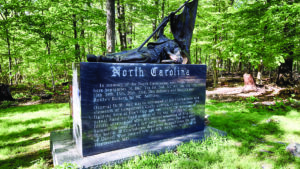 A short hike on a wooded trail at Fox’s Gap will find you at this monument to North Carolina troops who fought here. Inscribed on the back, a 12th Ohio member describes the bravery of the color-bearer who inspired its design. “…[T]he enemy falling back…were met by our line…and a terrific fight ensued. The color bearer of a Confederate regiment jumped up on the rear wall…and defiantly waving his flag, refused the many calls to surrender…was shot and fell…”
A short hike on a wooded trail at Fox’s Gap will find you at this monument to North Carolina troops who fought here. Inscribed on the back, a 12th Ohio member describes the bravery of the color-bearer who inspired its design. “…[T]he enemy falling back…were met by our line…and a terrific fight ensued. The color bearer of a Confederate regiment jumped up on the rear wall…and defiantly waving his flag, refused the many calls to surrender…was shot and fell…”
[hr]
They ‘Fought Like Tigers,’ 8629 Reno Monument Rd., Middletown
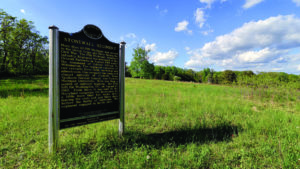 The raw recruits of the 17th Michigan Infantry had been in service less than a month when they saw their first combat at Fox’s Gap. The unit charged across this field and up the mountain toward the enemy behind a stone wall. Their commander, Colonel William Withington, yelled, “Over the wall and at ‘em!” The South Carolina troops they faced were forced to surrender or flee. “It was a severe baptism for the regiment, but a splendid victory. It has won its name,” Withington wrote in his diary. The unit’s success in the fight led it to be known as the Union’s “Stonewall Regiment.”
The raw recruits of the 17th Michigan Infantry had been in service less than a month when they saw their first combat at Fox’s Gap. The unit charged across this field and up the mountain toward the enemy behind a stone wall. Their commander, Colonel William Withington, yelled, “Over the wall and at ‘em!” The South Carolina troops they faced were forced to surrender or flee. “It was a severe baptism for the regiment, but a splendid victory. It has won its name,” Withington wrote in his diary. The unit’s success in the fight led it to be known as the Union’s “Stonewall Regiment.”
[hr]
Turner’s Gap, 6132 Old National Pike, Boonsboro
Interpretive signs at Turner’s Gap explain the Battle of South Mountain in full detail, including the late-day fighting here. The famed Iron Brigade furiously contested Confederate Colonel Alfred H. Colquitt’s Brigade along the National Road, ultimately forcing a Confederate retreat, but the cost was high.
[hr]
Christ Reformed Church, 12 S. Church St., Middletown
The steeple of the Christ Reformed Church in neighboring Middletown served as a Union observation station during the Battle of South Mountain and a hospital for wounded soldiers in its aftermath. Future President Rutherford B. Hayes, lieutenant colonel of the 23rd Ohio Infantry, was wounded during the Fox’s Gap fighting and cared for by a family in town in a house that still stands on Main Street.
[hr]
Mountain Gallery
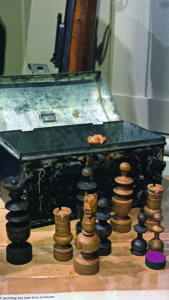
The remains of George Townsend’s elaborate Gapland Estate are maintained today as Gathland State Park and include the National War Correspondents Memorial and the remains of some of the 20 structures that once stood on the land. Several of the original buildings still stand and two of them, including part of Townsend’s home, hold the Gathland State Park Museum,which includes exhibits about Townsend’s personal life, his writings, and Gathland’s past. Visitors can experience what it was like to be a Civil War correspondent through an interactive exhibit using artifacts and firsthand accounts of the Battle of South Mountain. The museum is open weekends from 10 a.m.-4 p.m., April through October.
900 Arnoldstown Rd., Jefferson
[hr]
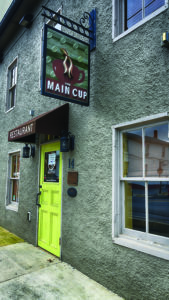 This popular eatery has been a fixture in downtown Middletown for more than 100 years. In 1922, C.F. Main began making and selling ice cream here and Main’s Ice Cream and Butcher Shop was revered, including by presidents and state officials. Today, the restaurant grill is open for breakfast, brunch, lunch, and dinner. A fully operational bar is open extended hours.
This popular eatery has been a fixture in downtown Middletown for more than 100 years. In 1922, C.F. Main began making and selling ice cream here and Main’s Ice Cream and Butcher Shop was revered, including by presidents and state officials. Today, the restaurant grill is open for breakfast, brunch, lunch, and dinner. A fully operational bar is open extended hours.

